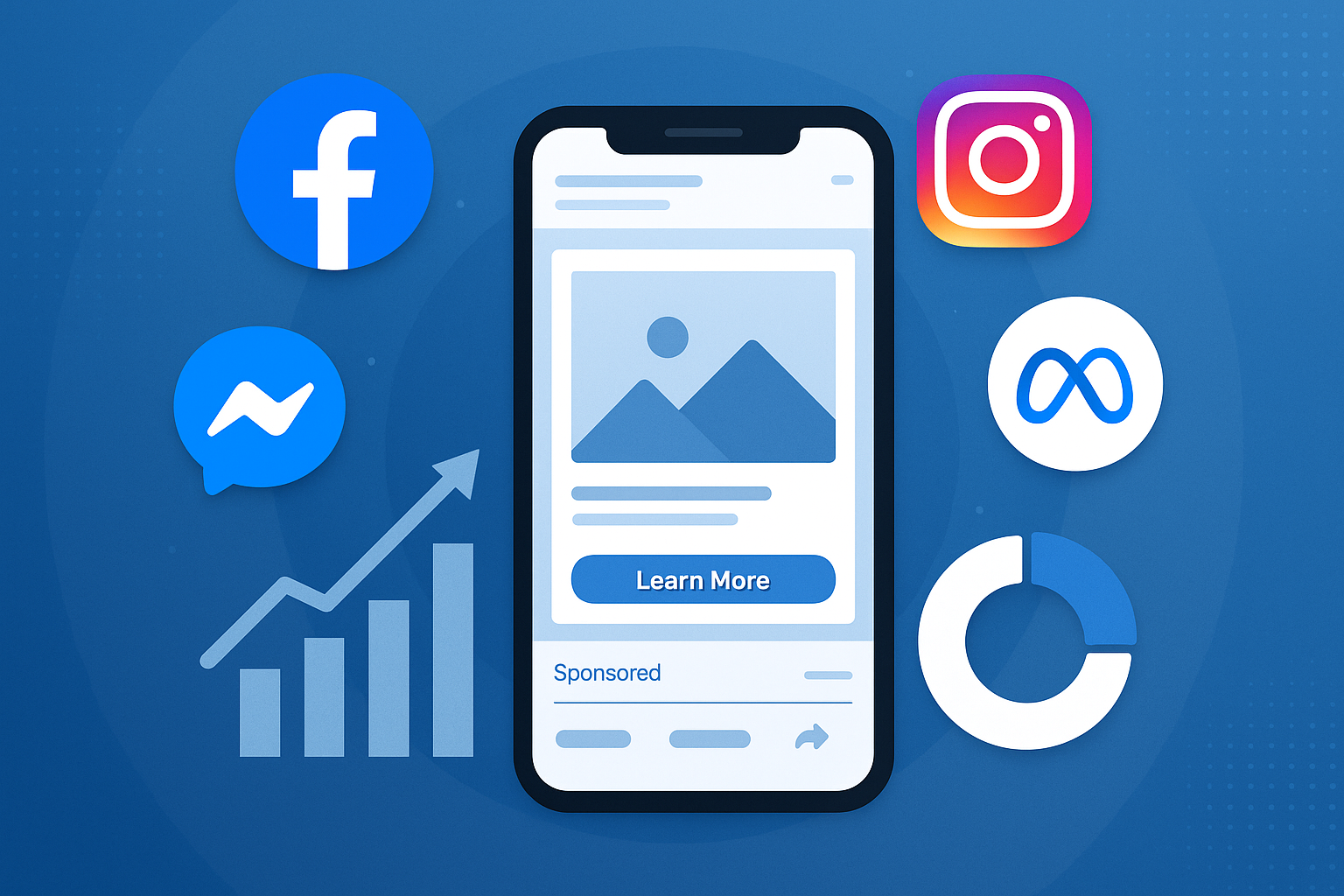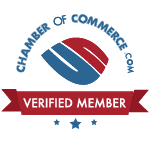THE MASTERCLASS
Marketing, SEO, and everything you need to know: The Masterclass.
Email marketing
Branding & design
Digital strategy
Copywriting & storytelling
The AOS Blog

Are you tired of seeing competitors outrank you, even when your services are superior? Visibility without conversion is the silent killer of growth. In the online space, consistent growth doesn't happen by chance, it's engineered. For service businesses, B2B businesses, and growth-hungry brands, the revenue journey begins with visibility but doesn't end there. The question is how to convert that visibility into a repeatable, scalable process that converts interest into action. At Acorn to Oak Strategies, we build growth systems combining search visibility, targeted ads, and back-end automation. The goal? To create a marketing infrastructure that works behind the scenes so you're not hunting for leads but closing them on autopilot. Visibility Alone Won’t Grow Revenue, Here’s Why Search ranking and advertising will put you in the conversation about your business, but attention does not equal profit. Without the proper structure, clear messaging, targeted content, and systems that drive users to conversion, visibility is a leaky funnel. Our approach starts by mapping search visibility and paid activity onto a customer journey. Whether the user finds your business through Google search or clicks on a social advertisement, we make the experience consistent, relevant, and conversion-driven. Build Unshakeable Trust and Evergreen Discoverability with SEO Good SEO is not keyword spamming or fast ranking chasing. It creates a strong, search-friendly foundation for your brand that gains people's trust in the long run. That means: Technical audits to make your website crawlable and quick On-page keyphrase optimization, metadata, and content architecture Local SEO strategies that connect you to local customers Backlink creation to determine authority and improve rankings If done properly, SEO increases visibility and your brand's credibility and value in the eyes of search engines and users alike. Ads That Don’t Just Interrupt, They Convert Placing ads is not enough, you need campaigns that speak to your audience and drive measurable results. Our paid media offerings are focused on relevance, creative testing, and data-driven targeting across the Meta, Google, and LinkedIn platforms. From top-of-funnel awareness to bottom-of-funnel retargeting, we build ad flows that learn and adapt based on user behavior and lead prospects to action. By linking ad engagement to your CRM or lead funnel, we ensure your media spend drives results—not impressions. Funnel Automation: Scaling Without Human Effort Most service businesses create leads, but lack the efficiency to follow up. That's where automation enters the picture. We build backend systems that capture, qualify, and nurture leads from various channels (email, SMS, CRM workflows) with minimal touchpoints and maximum conversion rates. These systems operate 24/7 so that an opportunity never slips through the cracks. Whether booking consultation appointments, making sales calls, or guiding users through a series of steps, funnel automation allows you to scale up without diluting your team. Organizing for Growth that Matters At the center of our methodology is a systems approach. While one-off tactics can yield bursty results, only systems yield compounding, sustained growth. By leveraging strategic SEO, focused paid media, and clever automation, we enable companies to transition from spasmodic growth to consistent, scalable momentum. Ready to Build a Revenue Engine That PAYS If your current marketing activities feel disconnected or don't provide the consistency you require, it may be time to shift from tactics to systems. Let's discuss how Acorn to Oak Strategies can assist in building the infrastructure beneath your next level of growth. Book a 20-Minute Revenue Blueprint Call Discover exactly where your revenue engine is leaking, no obligation. Let Acorn to Oak Strategies map a new path to predictable, compounding growth.

In today’s competitive digital world, companies face a greater struggle than ever to stand out with creative, dynamic, and attention-grabbing methods that engage their target audience, increase brand visibility, and convert leads. Of all the digital marketing tools at your disposal, Meta Ads are some of the most powerful advertising platforms on the planet. Facebook, Instagram, Messenger, and Audience Network, combined, form some of the most remarkable and diverse marketing tools ever created, capable of performing multiple actions to achieve very specific goals. At Acorn to Oak Strategies , we understand how Meta Ads Manager and effective ad creation can help you achieve your short- and long-term goals, resulting in meaningful outcomes and a high return on your overall digital marketing investment. In this blog, we’ll provide a step-by-step guide on using Meta Ads strategically, including the latest AI tools, so you can get the most from every ad dollar spent with a hands-on, expert-level Meta Ads playbook, crafted to elevate your digital marketing strategy. Why Meta Ads Are Essential for Digital Success Together, the Meta platforms have more than 3 billion monthly active users worldwide. This massive international footprint is enabling companies both large and small to have unrivaled access to their most targeted audiences directly through enriched demographics, interests, browsing behavior, and even past purchase data. Meta Ads enable companies to maximize their marketing spend by targeting advertising in a highly accurate manner, driven by complex algorithms and extensive analytics, meaning you get the most for your advertising budget, and you know when to stop, especially when using the Ads Manager. Key Components for Crafting High-Impact Meta Ads To unlock the full potential of Meta Ads and gain additional support, marketers must understand and carefully implement several critical components: 1. Precision Audience Targeting Meta’s advertising strength is largely based on its targeting accuracy. Businesses, large and small, manage multiple ad accounts as they have audience segmentation down to a science, customizing ads for the perfect audience based on who they are, what they do, or what their needs are, thereby streamlining their message and increasing its effectiveness. When you narrow down your audience by location, age, gender, interests, online behavior, and even their relationship to your pages or events, you ensure that your ads are seen by people who are truly interested in what you have to offer. For instance, an independent fitness studio can run ads directly to people within a 10-mile radius who have a history of interacting with fitness posts. This type of detailed, granular targeting significantly increases the likelihood of conversion compared to broad, untargeted audience methods, enabling marketers to compare campaigns and pinpoint effective strategies. 2. Compelling Creative Elements The visuals and messaging you choose to use in your Meta Ads for your Instagram account are among the most important drivers of campaign success. High-resolution imagery, compelling video content, shorter and punchier copy, and clear calls-to-action (CTAs) are essential for cutting through the clutter and capturing your audience’s attention and action on social media. Third, Meta platforms have several powerful, versatile formats to choose from—Stories, Carousels, Reels, dynamic ads, etc., with each format built to maximize visual appeal and interactivity. Now, imagine promoting a gourmet food emporium on Facebook: employing carousel ads tailored for different cuisines or meal types, utilizing certain features, each image highlighting a sumptuous dish accompanied by a detailed caption, will boost click-through rates exponentially, creating a dramatic uptick in user interaction and satisfaction. 3. Advanced Analytical Insights on Meta Technologies One of the most advantageous perks of Meta Ads is the robust reporting and detailed real-time insights that are at your disposal. Specific metrics are made available to advertisers, including impressions, reach, engagement, click-through rates, conversions, and return on ad spend (ROAS). Having real-time visibility into these metrics in the Ads Manager allows advertisers to continuously optimize their campaigns, increasing efficiency and ultimately driving better results. Potent analytics tools integrated directly into the Meta platform make it easy for advertisers to analyze performance, down to the level of demographic groups, device types, or geographic areas. This creates new possibilities for precision targeting and helps to manage innovative fix optimization strategies. Strategies for Maximizing ROI with Meta Ads Manager Optimizing your Meta Ads campaigns to create ads for maximum return on investment effectively involves several innovative strategies: Regularly test and optimize campaigns: Continuously test new creatives, messaging, audience segments, and ad formats to optimize performance. A/B, or split, testing works very well for pinpointing your best-performing ads. Leverage what you learn, but ensure that you are feeding it back into your strategy. Harness the Power of Retargeting: With retargeting ads, you can focus on individuals who have already interacted with your company but still need to complete a purchase or take another desired action. Meta Ads Manager enables businesses to create highly personalized retargeting campaigns within the Duplicate Accounts Center, significantly increasing conversion rates. Studies show retargeted users are up to 70% more likely to convert. Leverage AI and Machine Learning Capabilities: Meta’s AI-powered campaign management tools help you optimize your campaigns for improved performance with automated audience targeting, ad generation, and bid adjustments. Doing so allows businesses to leverage meta technologies and use these tools to more accurately predict how users will behave, know where to spend ad dollars more efficiently, and optimize ads on the fly to reach the highest-value prospects. Real-Life Success with Meta Ads: Case Studies Acorn to Oak Strategies has witnessed firsthand the transformative impact of effectively implemented Meta Ads strategies: Finance Industry: A regional financial services firm partnered with Acorn to Oak Strategies to enhance their online visibility and organic growth. Our tailored SEO and digital strategy delivered impressive early results within just the first month: 33% of all new users came from organic search, outpacing expectations for an initial campaign phase. 41% of tracked events on the site originated from SEO efforts, demonstrating high-quality engagement. 30% increase in total clicks in just one month, alongside improved average click-through rate (CTR) from 0.9% to 1.2%. Google My Business results: The business saw a 5.3% increase in direction requests , supporting real-world lead generation. With continued efforts—including ongoing content optimization, blog publishing, and Google My Business enhancements—the firm is positioned for sustained growth and even greater ROI in the months ahead. Retail Industry: A national tax planning firm partnered with Acorn to Oak Strategies to break through stagnant growth and unlock new customer acquisition at scale. While traditionally a service business, this client’s Meta Ads campaign delivered results on par with top-performing retail and e-commerce brands: $2.3 million in new revenue from cold traffic in just 30 days Over 34,000 conversions generated Managed $612K in ad spend across 18 ad sets, with a 5.33% conversion rate Achieved a blended cost per purchase of just $44.77 Individual campaigns scaled past $90K while maintaining efficiency and lead quality By treating their funnel with the rigor and measurement of high-performing retail brands, we transformed their ad spend into a scalable engine for revenue and growth, proving that our Meta Ads system can deliver retail-level results even for nontraditional industries. The above case studies demonstrate the real advantages companies can gain from professionally managed Meta Ads campaigns. Looking Ahead: The Future of Meta Advertising As digital marketing advances, so does Meta, including its platforms like Instagram, constantly innovating to stay at the cutting edge. It rolls out new features such as augmented reality ads, improved machine learning, and further integration of artificial intelligence and AI-powered optimization tools. Companies that remain ahead of the curve on these improvements will consistently benefit from significant competitive advantages. Ready to Transform Your Digital Marketing with Meta Ads? Meta Ads can offer some of the best, low-cost opportunities for getting your message in front of a targeted audience, allowing you to excel in digital marketing. Here at Acorn to Oak Strategies, we specialize in building and running comprehensive Meta Ads campaigns tailored to your business objectives and target audience. Get in touch with Acorn to Oak Strategies to discover how our expertise in Meta Ads can elevate your business to the next level in the digital world.

In today’s digital landscape, your website is your most valuable marketing asset. But even the most beautifully designed websites can underperform if they’re not search engine optimized. That’s where SEO audits come in. You may wonder, "Why are SEO audits crucial for website performance?" The answer lies in their ability to uncover hidden technical issues, identify content gaps, and reveal optimization opportunities that directly impact your visibility in search results. At Acorn to Oak Strategies , we believe that regular SEO audits are not just a best practice—they’re essential for long-term online success. This comprehensive guide walks you through the why, what, and how of SEO audits so you can take charge of your website’s health and performance. Why Are SEO Audits Crucial for Website Performance? SEO audits are like annual checkups for your website. Just as you'd visit a doctor to assess your health, your site needs regular analysis to identify issues affecting its performance in search engines. Here’s why SEO audits are crucial for website performance : Reveal technical issues that prevent indexing or crawling. Identify underperforming content that needs updating or removal. Expose mobile usability and speed problems that frustrate users. Diagnose backlink issues that could be harming your reputation. Provide a strategic roadmap for improvement. With constant updates to search algorithms and evolving user behavior, you can’t afford to “set and forget” your SEO strategy. Learn how Acorn to Oak Strategies’ SEO services support audit-driven growth. What Is an SEO Audit? An SEO audit is a comprehensive evaluation of all factors that influence your site’s ability to rank in search engines. An audit assesses: Technical health (site speed, mobile-friendliness, security) On-page SEO (meta tags, content, keyword usage) Off-page SEO (backlinks, authority signals) User experience (navigation, page structure, accessibility) Think of it as a full-spectrum diagnostic that gives you actionable insights to improve visibility, performance, and conversions. Benefits of Performing Regular SEO Audits Why should SEO audits be part of your ongoing digital strategy? Because they: Boost organic search visibility Increase website speed and efficiency Improve keyword rankings Uncover penalties or black-hat issues Enhance overall user experience These benefits directly contribute to long-term business growth, especially when paired with continuous optimization. Common Website Issues Uncovered During SEO Audits Many website owners are surprised to discover the range of hidden problems uncovered by a thorough audit, such as: Broken internal links Duplicate meta descriptions Missing or incorrect schema markup Poor mobile usability Redirect loops Thin or outdated content Toxic backlinks Slow page load speeds These issues are often invisible to the naked eye but have significant impacts on your search performance . The Ultimate SEO Audit Checklist A complete SEO audit covers multiple dimensions. Use this checklist as your roadmap: Technical SEO Mobile-friendliness HTTPS status Crawlability XML sitemap status Robots.txt configuration Core Web Vitals On-Page SEO Title and meta descriptions Header tags Image alt text URL structure Internal linking Off-Page SEO Backlink quality Anchor text distribution Referring domains Disavow toxic links Content Quality Duplicate content Keyword usage Readability Topical relevance UX and Speed Time to Interactive (TTI) Cumulative Layout Shift (CLS) Bounce rate Mobile navigation Technical SEO Audit: The Backbone of Website Performance Technical SEO ensures that search engines can properly access, interpret, and index your website. Key Elements: Site Architecture : Flat, logical structures rank better. HTTPS : A secure site builds trust and meets Google’s requirements. Canonicalization : Prevents duplicate content confusion. Mobile-Responsiveness : Mandatory in Google's mobile-first index. Explore how our technical SEO services can help your site’s infrastructure meet modern standards. On-Page SEO Audit: Optimizing What Users See An on-page SEO audit focuses on content and HTML elements visible to users and search engines. Core Components: Title Tags : Unique and keyword-rich Meta Descriptions : Compelling and within 155 characters Headers (H1–H3) : Organized and logical Alt Text : Descriptive for all images Keyword Placement : Naturally woven into headings, body, and metadata Proper on-page optimization boosts relevance and click-through rates. Off-Page SEO Audit: Analyzing Your Backlink Profile Backlinks remain a major ranking factor. An off-page audit evaluates the health and authority of your site’s backlink portfolio. What to Examine: Total number of backlinks Diversity of referring domains Domain authority of linking sites Toxic or spammy links Broken backlinks Use tools like Ahrefs or SEMrush to assess your profile and use the Google Disavow Tool when necessary. Content Audit: Evaluating Value, Relevance, and Structure Content is still king, but only if it's valuable, relevant, and optimized . How to Audit Content: Update or remove outdated content Consolidate thin articles Refresh high-performing blogs Add schema markup Evaluate for search intent alignment SEO audits help you map out a content strategy based on real performance data. User Experience and Core Web Vitals Google's emphasis on Core Web Vitals means that page speed, layout stability, and interactivity directly influence rankings. Focus On: Largest Contentful Paint (LCP) – Should load in under 2.5 seconds First Input Delay (FID) – Should be under 100 milliseconds Cumulative Layout Shift (CLS) – Should be below 0.1 Improving UX keeps users on your site longer and reduces bounce rates. SEO Tools to Supercharge Your Audit You don’t have to do it alone—here are some top SEO tools to streamline your audit process: Google Search Console – Technical and indexing insights Screaming Frog – Crawl and identify on-page issues SEMrush/Ahrefs – Backlink and competitor analysis GTmetrix – Site speed diagnostics Surfer SEO – Content optimization guidance Pairing tools with human analysis (like from our team at Acorn to Oak Strategies ) produces the best results. How Often Should You Perform an SEO Audit? The ideal frequency for SEO audits depends on your website size, update frequency, and industry competition. General Guidelines: Full SEO audit : Every 6 months Content audit : Quarterly Technical checkups : Monthly Post-redesign or migration : Immediately after launch Consistent auditing ensures that issues are caught early before they impact rankings. DIY vs. Professional SEO Audits While you can conduct a basic audit using free tools, a professional SEO audit digs deeper and provides strategic direction. DIY Pros: Cost-effective Good for minor sites DIY Cons: Limited scope Can miss critical errors No expert guidance A professional audit from Acorn to Oak Strategies delivers detailed reporting and a step-by-step action plan for recovery and growth. Conclusion In the ever-changing world of SEO, understanding why SEO audits are crucial for website performance is key to sustainable online success. Audits serve as the foundation of any smart digital strategy by uncovering technical flaws, content gaps, UX issues, and untapped opportunities. Whether you’re maintaining an established website or launching a new one, regular audits ensure your site is optimized, secure, and aligned with Google’s best practices. Let Acorn to Oak Strategies help you build and maintain a high-performing digital presence rooted in real data. FAQs Q1: Why are SEO audits crucial for website performance? A: They reveal hidden technical, content, and backlink issues that hinder search visibility and user experience, helping improve rankings and conversions. Q2: How long does a typical SEO audit take? A: A comprehensive audit can take anywhere from a few hours to a few days, depending on the size and complexity of your website. Q3: Can I perform an SEO audit myself? A: Yes, basic audits are possible with free tools, but a professional audit provides deeper analysis and strategic recommendations. Q4: How often should I audit my website’s SEO? A: At least twice a year for full audits, with smaller checks monthly or quarterly. Q5: What are the best tools for SEO auditing? A: Google Search Console, Screaming Frog, SEMrush, Ahrefs, GTmetrix, and Surfer SEO are excellent tools for different aspects of auditing.

For small businesses in Knoxville, visibility isn't just about having a website—it's about ensuring your business is easily found by local customers. Whether you’re a boutique retailer in Market Square, a contractor in Bearden, or a restaurant near the University of Tennessee, mastering local SEO strategies in Knoxville can be the difference between steady foot traffic and being overlooked online. This guide walks you through comprehensive, actionable local SEO strategies tailored specifically to Knoxville’s unique business landscape. Why Local SEO Matters for Knoxville Businesses Local SEO ensures that your business ranks in search results for Knoxville-based queries , such as “plumber near me” or “best bakery in Knoxville.” In today’s mobile-first environment, 76% of people who conduct a local search visit a business within 24 hours. For businesses operating in the greater Knoxville area, investing in local search optimization helps you: Drive in-store visits and calls Improve online visibility in map packs Attract high-converting, intent-driven customers Compete against larger regional or national chains Learn more about SEO solutions customized for local businesses . Understanding Knoxville's Digital Landscape Knoxville’s business ecosystem spans from corporate headquarters to artisanal startups. Here’s why local SEO in this market demands a tailored strategy: Diverse Neighborhoods: Strategies must target micro-areas like North Knoxville, Old City, and Cedar Bluff. Tourist & Student Populations: Seasonal influxes affect search intent. Mobile Search Dominance: Over 60% of Knoxville residents use mobile to find local services. Localized SEO tactics help you remain competitive across this varied terrain. Google My Business: Your Local SEO Foundation A fully optimized Google My Business (GMB) profile is the bedrock of local SEO strategies in Knoxville . GMB is directly tied to Google’s local 3-pack, which shows the top three listings for location-based searches. Benefits: Enhances local discoverability Increases customer trust Drives calls, visits, and reviews Don’t underestimate the power of GMB—it’s often your first impression . How to Optimize Your Google My Business Profile 1. Accurate NAP Ensure your Name, Address, and Phone number (NAP) are identical across all directories and your website. 2. Choose the Right Categories Use specific categories such as “Mexican restaurant” over generic terms like “restaurant.” 3. Add High-Quality Photos Businesses with photos receive 42% more requests for directions and 35% more click-throughs . 4. Post Regular Updates GMB allows you to post events, offers, or updates—ideal for Knoxville’s dynamic event calendar. 5. Enable Messaging Allow potential customers to message you directly from search results. Explore custom GMB strategies with Acorn to Oak. The Power of Local Citations and NAP Consistency Local citations are mentions of your business on directories like Yelp, YellowPages, or the Knoxville Chamber of Commerce. Why They Matter: Validate your business to search engines Improve ranking in local pack results Drive referral traffic Knoxville-Specific Directories to Consider: KnoxvilleChamber.com VisitKnoxville.com TennesseeDirectory.com Ensure NAP consistency across all listings—discrepancies can hurt local rankings . On-Page SEO for Local Businesses Your website must reflect your local relevance . On-page optimizations include: Adding your business address in the footer Creating location-specific service pages (e.g., “Roofing Services in Knoxville”) Using geo-modified keywords like “Knoxville landscaping experts” Need help implementing these strategies? Check out Acorn to Oak’s SEO services . Hyperlocal Keyword Targeting Move beyond broad terms. Use tools like Google’s Keyword Planner or Ubersuggest to identify terms like: “best dog groomer in Fountain City” “Knoxville TN wedding photographer” Mobile Optimization for Local Searches Google prioritizes mobile-friendly websites in local searches. Mobile SEO Essentials: Fast load times (under 3 seconds) Click-to-call phone numbers Mobile-friendly booking or contact forms Responsive design that adapts to all screen sizes Online Reviews and Reputation Management Why It Matters: 88% of consumers trust online reviews as much as personal recommendations. Reviews influence both GMB rankings and conversions. Tips: Ask for reviews after a successful sale or service Respond professionally to all feedback Highlight 5-star testimonials on your website Use your GMB dashboard to monitor and manage reviews easily. Localized Content Marketing Create blog and social content around Knoxville-centric topics to build trust and authority. Ideas: “Top 5 Family Activities in Knoxville This Summer” “Why Our Old City Location Makes Your Commute Easier” “How Knoxville Weather Impacts Roofing Choices” This improves user engagement and drives organic traffic through relevant content. Local Link Building Strategies Building high-quality backlinks from local sources helps Google trust your site’s relevance to Knoxville. Link Building Sources: Local news publications like Knox News Knoxville Chamber events or sponsorships Collaborations with local bloggers or influencers Partnering with local nonprofits or events also boosts community goodwill. Schema Markup for Local SEO Schema helps search engines understand your content better. Use LocalBusiness schema to add: Business name Address and contact details Opening hours Service area Implement schema via plugins (like Yoast) or manual HTML updates for richer search results. Tracking Your Local SEO Progress It’s vital to measure the success of your local SEO efforts. Key Tools: Google Search Console : Track keyword visibility and clicks Google Analytics : Analyze user behavior by location GMB Insights : Understand actions taken from your profile Rank Tracking Software : Monitor local keyword movements Working with Acorn to Oak Strategies ensures access to data-driven insights and regular performance reporting. Partnering with Knoxville SEO Experts While DIY efforts can get you started, partnering with a Knoxville-based team like Acorn to Oak Strategies helps you: Implement advanced tactics Save time and focus on running your business Get access to premium SEO tools Stay updated on Google algorithm changes Our team provides comprehensive local SEO services in Knoxville that are customized to your industry, audience, and goals. Conclusion Mastering local SEO strategies in Knoxville requires more than generic advice—it demands hyperlocal awareness, strategic execution, and consistent monitoring. Whether you're trying to attract foot traffic in the Old City or grow your online bookings in West Hills, Acorn to Oak Strategies can help elevate your digital presence. By following the actionable tips in this guide—from optimizing Google My Business to building citations and publishing local content—you can significantly increase your visibility and outperform competitors in Knoxville’s dynamic local market. FAQs Q1: What are the best local SEO strategies for Knoxville businesses? A: The most effective include optimizing Google My Business, building local citations, using hyperlocal keywords, gathering customer reviews, and creating Knoxville-centric content. Q2: How often should I update my GMB profile? A: Regular updates—at least once a week—help maintain visibility and customer engagement. Q3: What are local citations? A: Mentions of your business's NAP (name, address, phone) on directories, websites, and listings. Consistency improves your local SEO. Q4: Why is mobile optimization important for Knoxville businesses? A: A large portion of local searches happen on mobile devices. If your site isn’t mobile-friendly, users may bounce—hurting your ranking and conversions. Q5: How can Acorn to Oak Strategies help with local SEO? A: We offer custom local SEO services in Knoxville , from GMB optimization to localized content strategy, helping you grow organically in your target neighborhoods.

As we step deeper into 2025, businesses are facing an increasingly volatile economic landscape. Rising inflation, interest rate changes, and supply chain complexities now directly affect how mobile marketers allocate their ad spend and spend their marketing funds in the real world. While tightening the purse strings across the board might be tempting, smart marketers know that cutting marketing spend blindly is rarely the answer. Instead, success in 2025 lies in ad campaign optimization, the ability to measure ad spend, strategic reallocation across different channels, smarter tools, and a deep understanding of where real ROI lives. Here’s what you need to know—and what you should do next. The Economic Climate: What’s Driving Ad Spend Decisions
Want more? Sign up for our newsletter
We don't like spam, we assume you don't either. Signing up for the newsletter will give you monthly content to your inbox that you can leverage for your own business. Opt out at anytime.



























































































 scale operations --> repeat.
Clients have seen 12 month growth goals crushed in a fraction of the time. We're your partners along the way - partners that are focused on YOUR ROI, that do 80% or more of the heavy lifting, and that are looking out for the holistic health of your business.
Curious for more? We're always happy to show you where you can scale.
#acorntooakstrategies #growthpartner #businessdevelopment #sales #operationsmanagement" aria-labelledby="" onerror="handleImageLoadError(this)"/>
scale operations --> repeat.
Clients have seen 12 month growth goals crushed in a fraction of the time. We're your partners along the way - partners that are focused on YOUR ROI, that do 80% or more of the heavy lifting, and that are looking out for the holistic health of your business.
Curious for more? We're always happy to show you where you can scale.
#acorntooakstrategies #growthpartner #businessdevelopment #sales #operationsmanagement" aria-labelledby="" onerror="handleImageLoadError(this)"/>








